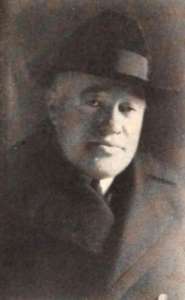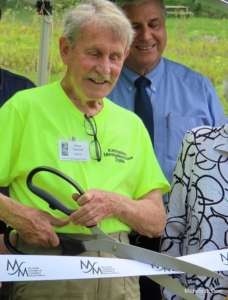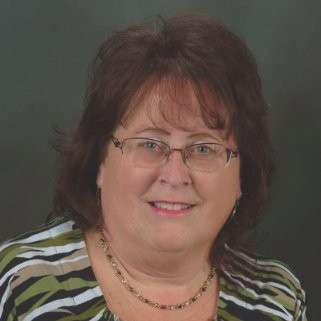
Holman Francis Day
Vassalboro native Holman Francis Day (1865 – 1935) was a well-known and prolific Maine writer. Starting as a newspaperman, he went on to write poetry and novels in verse, novels in prose, a play, non-fiction pieces and movie scripts.
According to Kristin Stred and Robert Bradley (writers of the Maine Historic Preservation Commission’s 1977 National Register of Historic Places nomination form for Holman Day’s Auburn house), while in high school Day published the Weekly Vassalboro News for two years. He continued newspaper work fresh out of college in 1887 with the Fairfield Journal (a weekly published from 1879 to 1925).
An on-line article in Maine An Encyclopedia says from 1888 to 1892 Day edited the Dexter Gazette, making it “a successful and sprightly country weekly.” (This newspaper became the Eastern Gazette, still published weekly in Dexter and advertising that it serves more than 17,500 households in 42 towns.)
For another two decades, Day was a “special correspondent and columnist” for the Lewiston Evening Journal (a daily published from 1866 to 1989, when it merged with its competitor, the Lewiston Daily Sun, to form today’s Lewiston Sun Journal). He spent a brief time in Portland in 1892, and wrote for newspapers in Boston and New York.
His first book-length work was published in 1900.
Starting in 1918 in Augusta, Day made black-and-white films; sources mention the 1920-21 Holman Day Film Company, which was not a financial success. By 1928, he had moved to California, where he wrote Hollywood scripts as well as novels of Maine life.
* * * * * *
Holman Day was born in Riverside, in southwestern Vassalboro, on Nov. 6, 1865. His father was Captain John Randolph Day (Aug. 1, 1828 – 1889), a Civil War veteran who enlisted in May 1861, was in several major battles and was twice captured by the Confederates, spending time in Libby and Andersonville prisons.
Holman’s mother was Mary A. (Carter) Day (1834-1908), from Etna. The couple named the second of their three sons Holman after a wartime friend of his father, and Francis after John’s brother, Thomas Francis Day.
The Day house was on what is now a section of Old Route 201 named Holman Day Road. Sources differ on the exact location.
The family moved to Wiscasset for six years, returning to Vassalboro about 1874. Sources indicate they lived in at least two different houses in the Getchell’s Corner area of northwestern Vassalboro.
Day graduated from Oak Grove Seminary, in Vassalboro, in the Class of 1881, spent a year at Coburn Classical Institute, in Waterville, and graduated from Colby College, in Waterville in 1887. At Colby, he was named class poet in his sophomore and senior years, and worked on the Colby Echo, the student-run newspaper. The on-line encyclopedia article says he gained a reputation “as a wit, writer, and drinker.”
While with the Fairfield Journal, Day met Helen Rowell Gerald (1870-1902), only daughter of Amos Fitz and Caroline Wood (Rowell) Gerald. They were married Feb. 6, 1889.
Amos Gerald built the newly-weds a house in Auburn. Stred and Bradley said Day lived and wrote there for 17 years; another source said from 1895 to 1914.
The Holman Day house at 2 Goff Street has been on the National Register of Historic Places since Jan. 17, 1978. It is privately owned and closed to the public.
The Days had two daughters, Ruth, born and died in 1893, and Dorothy, born in Auburn on Feb. 19, 1895. Dorothy married Ralph Burton Drisko, Jr., on March 15, 1918, in Mobile, Alabama, according to Find a Grave (which does not explain why she was in Alabama). He was lost at sea in 1924. On March 14, 1926, Dorothy married again, in Waterville, Maine; her second husband was Roy LeChance Kilner.
Helen Day died July 12, 1902, of heart disease and is buried in Fairfield’s Maplewood Cemetery with her parents and her daughters.
Day’s second wife was Agnes M. (Bearce) (Nevens) (1867-1954), a divorcee, from Lewiston. The City of Auburn report for the municipal year ending Feb. 28, 1906, lists Agnes Bearce as a (new?) teacher at North Auburn Primary School, who had trained at Hebron Academy.
They were divorced in 1927.
Day’s third wife was Florence Levin, from Portland.
Day died Feb. 19, 1935, in Mill Valley, California. He is buried in Vassalboro’s Nichols Cemetery, with his parents and Fred Mortimer Day (1870-1938), who your writer assumes was his younger brother.
* * * * * *
In 1898, Stred and Bradley said, Day added to his journalism a daily poetry column, Up in Maine. It “was carried by newspapers across the country” for half a dozen years.
Wikipedia quotes a 1928 article from a Carmel, California, newspaper in which Day said his first poem for the Lewiston Evening Journal resulted in a libel suit against the newspaper that gave his poem a value “never received by the great Longfellow in his palmiest days.”
In 1900, a collection of these poems became Day’s first book, Up in Maine: Stories of Yankee Life Told in Verse. It was followed in 1902 by Pine Tree Ballads: Rhymed Stories of Unplaned Human Natur’ up in Maine; and in 1904 by Kin o’ Ktaadn: Verse Stories of the Plain Folk who are Keeping Bright the Old Home Fires Up in Maine.
Stred and Bradley wrote that these “books of catchy verse…entertained more than 30,000 readers.”
The first poem in Up in Maine, titled Aunt Shaw’s Pet Jug, is about Uncle Elnathan Shaw, “Most regular man you ever saw!” For 30 years, at 4:40 every afternoon he would pick up “the big blue jug from the but’ry shelf” and go down the cellar stairs to draw two quarts of old cider for the evening.
And every afternoon, “Auntie Shaw would yap through her old cross mug” telling him not to fall on the second step and break her favorite jug, inherited from her great-aunt Sue.
One day, Nathan did fall all the way from the second step. He did not break the jug:
And he’d saved the jug; for his last wild thought
Had been of that; he might have caught
At the cellar shelves and saved his fall,
But he kept his hands on the jug through all.
Now, “as he loosed his jealous hug,” his wife’s only concern was “Did ye break my jug?” Enraged at her disregard for his “poor old bones,” Nathan replied, “No, durn yer pelt, but I swow I will” and smashed it against the wall.
The poem titled The Stock in the Tie-Up celebrates life in a well-heated house with a good hot meal on a stormy night and ends with “the stock in the tie-up is warm.” It contrasts the speaker, willing to spend a Sunday doing the extra work to make his barn weather-proof, with his church-going neighbors, who have “cracks in the sides o’ their tie-ups…wide as the door o’ their pew” through which sleet and snow enter.
Day did not approve. He wrote:
And I’ll bet ye that in the Hereafter the men who have stayed on their knees
And let some poor, fuzzy old cattle stand out in a tie-up and freeze,
Will find that the heat o’ the Hot Place is keyed to an extra degree
For the men who forgot to consider that critters have feelin’s same’s we.
One of your writer’s favorite poems is in the third collection, Kin o’ Ktaadn. Titled The Latest Tip from ‘Patent-Right’ Belcher, it invites investment in Patent-Right’s new invention, a two-part device for letting the family cat out the door and back in the window – after the family dog identifies him or her and opens the window – so that people need not get out of warm beds on cold nights.
Day’s first novel, Squire Phin, came out in 1905 and was followed by another 29, plus “300 short stories and poetry,” according to an on-line article about the Auburn house.
Squire Phin opens at the village store in Palermo — a coastal town, not the Kennebec Valley Palermo. Squire Phin has his law office upstairs. The second chapter introduces Squire Phin’s prodigal brother, accompanied by an elephant.
Several sources call King Spruce (1908) Day’s best-known and most popular novel. Stred and Bradley wrote that this book “became a prototype for books about Maine lumbering” – certainly a prototype for many of Day’s later novels, which repeat the dual themes of timber barons’ rivalry and their children’s romances.
King Spruce, according to Stred and Bradley, “firmly established Day’s reputation as a novelist, and delighted President Theodore Roosevelt so much that he invited Day to the White House.”
The novel features a young, college-educated hero named Dwight Wade who deals competently with uneducated, good-hearted woodsmen whose livelihoods depend on city-based lumber companies. Corporate rivalries make life extra hard for the low-level workmen.
Day explained that the term King Spruce stood for an unseen tyrant, a “vast association of timber interests,” visible only in the form of local officers who worked from headquarters in Maine mill towns. Most of his sympathy was with the loggers; but at times he sounded as though he would like the woods left alone, with references to “destruction” by logging and “slaughter” of deer and moose.
In addition to relations among loggers and logging companies, Day introduced several independent, opinionated, stubborn and attractive young women who added love stories to the already-complicated plot.
After many adventures, the villains were defeated, dead or had experienced changes of heart; the loggers had a better deal; and the central pair of lovers rode away together in a pony-drawn carriage.
These themes recur in later novels, like The Rider of the King Log (1919) and Joan of Arc of the North Woods (1922). Day even wrote a North Woods novel for young readers: The Rainy Day Railroad War (1906) was first serialized in The Youth’s Companion magazine. It lacks a romantic subplot.
Some of Day’s novels are unabashed romances, like The Red Lane a Romance of the Border (1912) and Blow the Man Down: A Romance of the Coast (1916). The Skipper and the Skipped (1911) and The Landloper (1915) are examples of more varied themes.
Stred and Bradley commented that Day “had an eye for unusual Maine characters, and an ear for their unique dialect. He then wove stories around the personalities and exploits of the woodsmen and seafarers he had observed and with whose ways he was familiar.”
The historians called his writings “an important part of the literary heritage of Maine.”
Holman’s work can be seen at Vassalboro Historical Society
The Vassalboro Historical Society owns Holman Day memorabilia, including, president Janice Clowes said, his books, movies made from his books and a movie about him, movie posters, newspaper clippings and other items.
The society’s Holman Day files include a biography, written as a master’s thesis at the University of Maine at Orono in 1942.
The museum is located in the former East Vassalboro schoolhouse, on the east side of Route 32 on the south edge of East Vassalboro Village, close to the outlet of China Lake and the boat landing. Hours are Mondays and Tuesdays from 9 a.m. to 1 p.m., and the second and fourth Sundays of each month from 1 to 4 p.m.
Main sources
Day, Holman various writings.
Stred, Kristin (student assistant), and Robert L. Bradley, National Register of Historic Places Inventory – Nomination Form Holman Day House, June 1977.
Vassalboro Historical Society files.
Websites, miscellaneous.




 The Central Maine Agency on Aging d/b/a Spectrum Generations will hold public hearings on the proposed four-year Central Maine Area Plan on Aging for Older Americans Act (OAA) funded programs and services that help older Mainers, and their care partners, remain healthy and safe in their communities.
The Central Maine Agency on Aging d/b/a Spectrum Generations will hold public hearings on the proposed four-year Central Maine Area Plan on Aging for Older Americans Act (OAA) funded programs and services that help older Mainers, and their care partners, remain healthy and safe in their communities.







 Young Mainers looking for help navigating their next step have a new opportunity to take free four- to six-week classes at Maine’s community colleges this summer under a new “Summer Academy” program offered by the colleges and nonprofit education partner JMG.
Young Mainers looking for help navigating their next step have a new opportunity to take free four- to six-week classes at Maine’s community colleges this summer under a new “Summer Academy” program offered by the colleges and nonprofit education partner JMG.